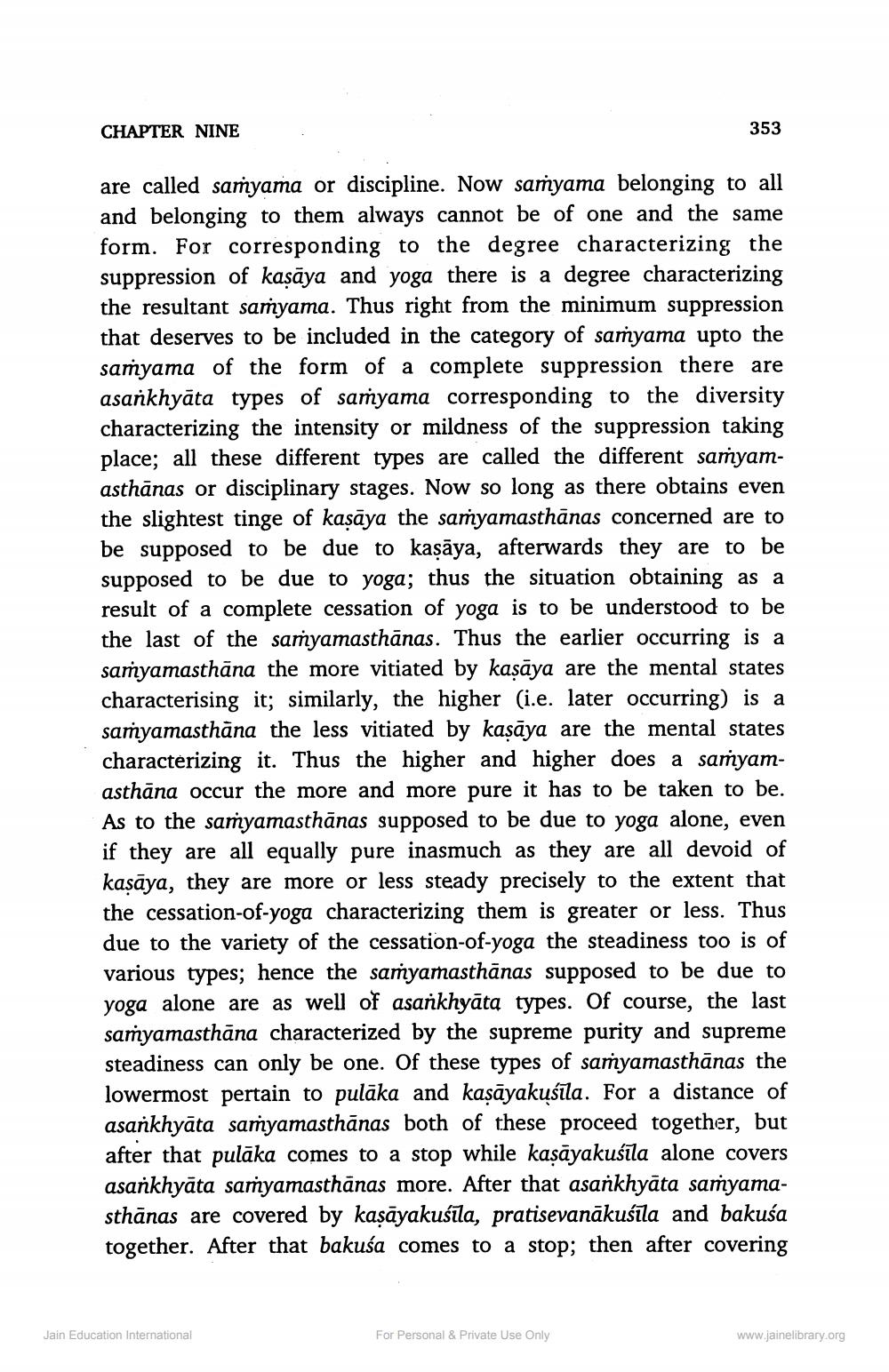________________
CHAPTER NINE
are called samyama or discipline. Now samyama belonging to all and belonging to them always cannot be of one and the same form. For corresponding to the degree characterizing the suppression of kaṣāya and yoga there is a degree characterizing the resultant samyama. Thus right from the minimum suppression that deserves to be included in the category of samyama upto the samyama of the form of a complete suppression there are asankhyāta types of samyama corresponding to the diversity characterizing the intensity or mildness of the suppression taking place; all these different types are called the different samyamasthānas or disciplinary stages. Now so long as there obtains even the slightest tinge of kaṣāya the samyamasthānas concerned are to be supposed to be due to kaṣāya, afterwards they are to be supposed to be due to yoga; thus the situation obtaining as a result of a complete cessation of yoga is to be understood to be the last of the samyamasthānas. Thus the earlier occurring is a samyamasthāna the more vitiated by kaṣāya are the mental states characterising it; similarly, the higher (i.e. later occurring) is a samyamasthāna the less vitiated by kaṣāya are the mental states characterizing it. Thus the higher and higher does a samyamasthāna occur the more and more pure it has to be taken to be. As to the samyamasthānas supposed to be due to yoga alone, even if they are all equally pure inasmuch as they are all devoid of kaṣāya, they are more or less steady precisely to the extent that the cessation-of-yoga characterizing them is greater or less. Thus due to the variety of the cessation-of-yoga the steadiness too is of various types; hence the samyamasthānas supposed to be due to yoga alone are as well of asankhyāta types. Of course, the last samyamasthāna characterized by the supreme purity and supreme steadiness can only be one. Of these types of samyamasthānas the lowermost pertain to pulāka and kaṣāyakuśīla. For a distance of asankhyāta samyamasthānas both of these proceed together, but after that pulāka comes to a stop while kaṣāyakuśīla alone covers asankhyāta saṁyamasthānas more. After that asankhyāta samyamasthānas are covered by kaṣāyakuśīla, pratisevanākuśīla and bakuśa together. After that bakusa comes to a stop; then after covering
Jain Education International
353
For Personal & Private Use Only
www.jainelibrary.org




